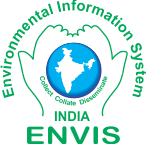Issues: 1 2 3 4 5 6 7 8 9 10 11 12 13 14 15 16 17 18 19 20 21 22 23 24 25 26 27 28 29 30 31 32 33 34 35 36 37 38 39 40 41 42 43 44 45 46 47 48 49 50 51 52 53 54 55 56 57 58 59 60 61 62 63 64 65 66 67 68
Vinay. S1,2, Bharath, S1, Chndran, M. D. S1,Bharath, H. A1,3, Shashishankar, A2,4, Ramachandra. T. V1 5. Conclusion Sharavthi river catchment’s physical integrity is altered with the implementation of unplanned developmental projects such as the construction of series of dams, which has led to reduction in forests to 42.8% (2016), dams and reservoirs cover about 6.9% of the catchment area. These structural alterations of the landscape in the basin have altered the natural hydrologic regime. Assessment of water footprint indicates the requirement of 4025 million cubic meters for the societal and livestock demand, 3619 million cubic meters for terrestrial ecosystems and environmental flow of 1207 million cubic meters (to sustain aquatic biota). The terrestrial demand is met by percolated water in hypo-morphic zone, supply in the basin would be function of surface and subsurface flows. Eco-hydrological footprint emphasizes the role of forests on infiltration and evapotranspiration capabilities. Hydrological footprint shows sustained water supply catering societal and environmental demands in the catchment dominated by native forest cover of endemic flora. Inter annual variability of supply and demand foot prints indicate that the sub basins between coasts and Ghats are with perennial river streams, whereas the transition zones between Ghats and plains towards the eastern portions showed deficit of water for 6 to 10 months with intermittent and seasonal flow. Occurrenec of streams with 12 months flow in the ecologically senstive region (1 and 2) confirms of linkages of hydrologic regime with the ecological senstivness of a region. This highlights that streams are perennial in the catchment with forest cover > 60% and with higher endamic plant speciesconfirming the linkage between ecology, hydrology with the land use dynamics in the catchment. This provides invaluable insights to the catchment management in an era dominated by mismanagement of river catchment with the enhanced deforestation process, inappropriate cropping and poor water efficiency NEXT
|

